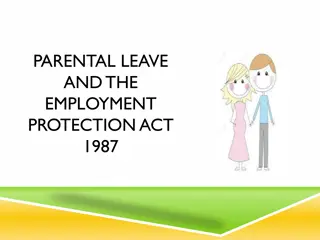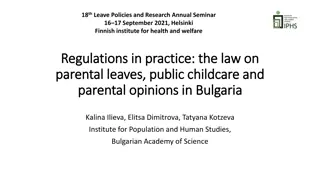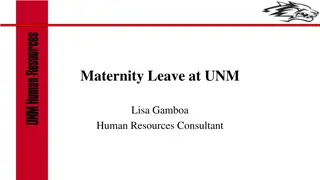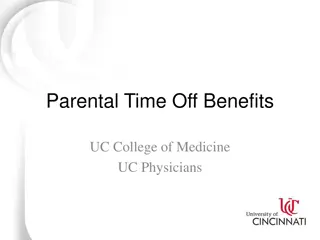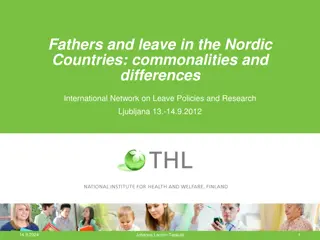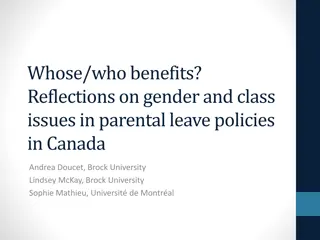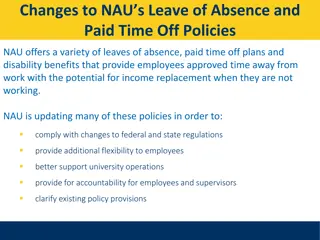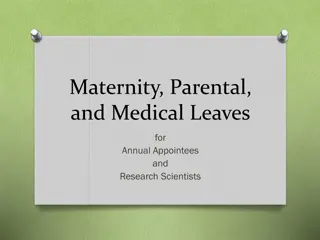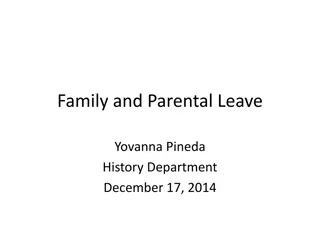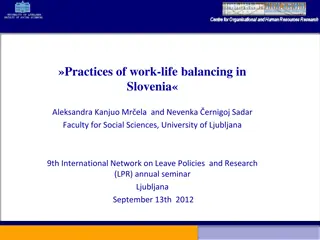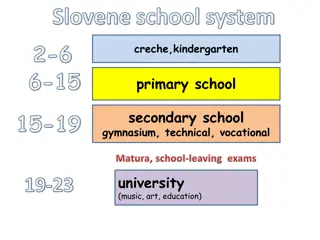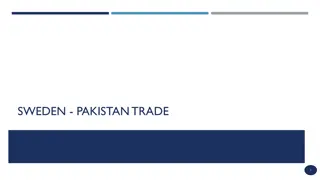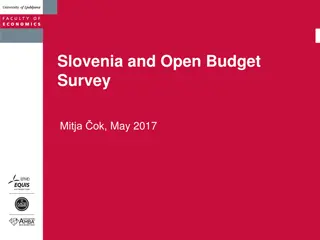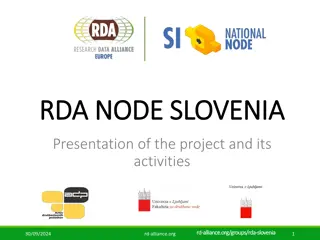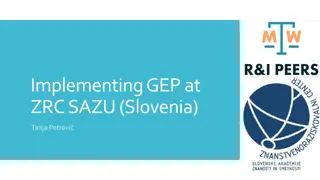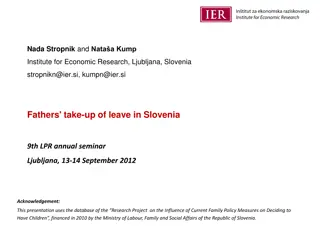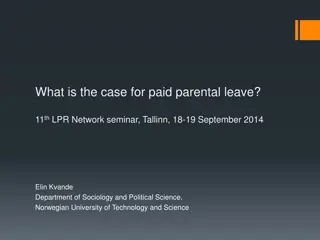A Comparative Analysis of Parental Leave Policies in Slovenia and Sweden
This study compares the parental leave policies of Slovenia and Sweden, highlighting key similarities and differences. Lessons from the comparison include the early establishment of paid maternity leave in both countries, the involvement of various stakeholders in policymaking, and the differing approaches towards equality promotion. While Slovenian policies focus on choice and gender discourse, Swedish policies emphasize gender equality and enhanced fertility.
Download Presentation

Please find below an Image/Link to download the presentation.
The content on the website is provided AS IS for your information and personal use only. It may not be sold, licensed, or shared on other websites without obtaining consent from the author. Download presentation by click this link. If you encounter any issues during the download, it is possible that the publisher has removed the file from their server.
E N D
Presentation Transcript
Slovenian Parental Leave - A Nordic Perspective Linda Haas Indiana University 9th Annual Meeting of The International Network on Leave Policies and Related Research, Ljubljana
Objectives Present five lessons that can be learned from comparing Slovenian parental leave to Sweden s Pose questions about Slovenian parental leave in relation to Sweden s
Lesson #1- Policies similar in many praiseworthy respects Policymaking began early (in 1927 in Slovenia, 1931 in Sweden) with paid maternity leave, establishing a structural and ideological foundation for women s labor force particular and the dual- earner family Kept maternity short Long leaves hurt women s long-term labor market opportunities and can be hard to divide up later for fathers use First in world to allow fathers to share paid leave in 1974 breaks down gendered assumptions about parenting and work
Lesson 2: Policies developed in similar commendable manner Same concerns drove policymaking (fertility, economic well-being), encouraging long-term and well-planned policymaking Wide variety of stakeholders involved in policymaking (including academics, unions) Took care of the caregiving gap early childhood programs widely available and affordable at age 1 after leaves are over Have pursued children s and women s well-being, without seeing these as in conflict
Lesson 3: Slovenian policy less equality promoting than Sweden Slovenian policies tend to be equality-enabling (with a focus on choice) while Swedish policies tend to be equality-promoting (with a focus on gender equality) Equality-promoting policies compensate fathers well for taking parental leave Slovenia s equality-enabling policies associated with a gender discourse focusing on women s equal labor participation vs. gender equality Slovenians have more traditional gender attitudes and share childcare less than Swedish couples
Lesson 4: Swedens equal- promoting policies associated with enhanced fertility Leave policy enhances fertility in Sweden, but not in Slovenia Fathers use of parental leave associated with larger family sizes in Sweden Slovenia women may postpone children because of perceived greater domestic workload, in families with traditional gender attitudes
Lesson 5: Dominance of work over family greater in Slovenia Slovenian economy characterized more by precarious work and work intensification than Sweden s Slovenians more likely than Swedes to say work is the most important thing in life, that earning money is very important Long hours culture better established in Slovenia than Sweden Dominance of work over family constrains Slovenian men s participation in parental leave and childcare
Questions Why did Slovenia look to Sweden as a model for parental leave policy? How exactly did Sweden have an influence? Which path will Slovenia follow in the future? Slovenia is similar to West European states in having high women s labor force participation, affordable childcare and fathers rights to leave, but similar to Central East European states in having more conservative attitudes toward gender roles Is there an independent course that Slovenia can follow?



